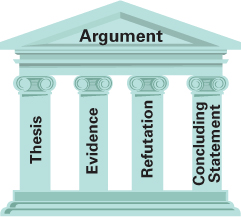Orenstein, Should the World of Toys Be Gender-Free?
EXERCISE 13.7
The following essay, “Should the World of Toys Be Gender-
This opinion column is from the December 29, 2011, New York Times.
SHOULD THE WORLD OF TOYS BE GENDER-
PEGGY ORENSTEIN
1
Now that the wrapping paper and the infernal clamshell packaging have been relegated to the curb and the paying off of holiday bills has begun, the toy industry is gearing up—
2
Hamleys, which is London’s 251-
3
That free-
4
“Should gender be systematically expunged from playthings?”
So who has it right? Should gender be systematically expunged from playthings? Or is Lego merely being realistic, earnestly meeting girls halfway in an attempt to stoke their interest in engineering?
5
Among the “10 characteristics for Lego” described in 1963 by a son of the founder was that it was “for girls and for boys,” as Bloomberg Businessweek reported. But the new Friends collection, Lego says, was based on months of anthropological research revealing that—
6
While as toddlers they interact similarly with the company’s Duplo blocks, by preschool girls prefer playthings that are pretty, exude “harmony,” and allow them to tell a story. They may enjoy building, but they favor role play. So it’s bye-
Page 480
7
As any developmental psychologist will tell you, those observations are, to a degree, correct. Toy choice among young children is the Big Kahuna of sex differences, one of the largest across the life span. It transcends not only culture but species: in two separate studies of primates, in 2002 and 2008, researchers found that males gravitated toward stereotypically masculine toys (like cars and balls) while females went ape for dolls. Both sexes, incidentally, appreciated stuffed animals and books.
8
Human boys and girls not only tend to play differently from one another—
9
Score one for Lego, right? Not so fast. Preschoolers may be the self-
10
Every experience, every interaction, every activity—
11
At issue, then, is not nature or nurture but how nurture becomes nature: the environment in which children play and grow can encourage a range of aptitudes or foreclose them. So blithely indulging—
12
Traditionally, toys were intended to communicate parental values and expectations, to train children for their future adult roles. Today’s boys and girls will eventually be one another’s professional peers, employers, employees, romantic partners, co-
13
The rebellion against such gender apartheid may have begun. Consider the latest cute-
Page 481
14
Perhaps, then, Hamleys is on to something, though it will doubtless meet with resistance—

Identifying the Elements of a Cause-
Where does Orenstein answer the question her title asks? How would you answer this question?
Orenstein’s discussion of toys is based on the assumption that the world would be a better place if children were raised in a gender-
neutral environment, but she does not offer any evidence to support this implied idea. Should she have? Is she begging the question? In paragraph 7, Orenstein reports on two studies of primates. What conclusion does this evidence support? What conclusion does Lise Eliot’s research (para. 9) support?
How do you react to Orenstein’s use of the term gender apartheid (13)? What does this term mean? What connotations does it have? Given these connotations, do you think her use of this term is appropriate? Why or why not?
According to Orenstein, what effects do stereotyped toys have on children? Does she support her claims?
Orenstein’s thesis seems to leave no room for compromise. Given the possibility that some of her readers might disagree with her, should she have softened her position? What compromise position might she have proposed?
This essay traces a causal chain. The first link in this chain is the “anthropological research revealing that . . . the sexes play differently” (5). Complete the causal chain by filling in the template below.
